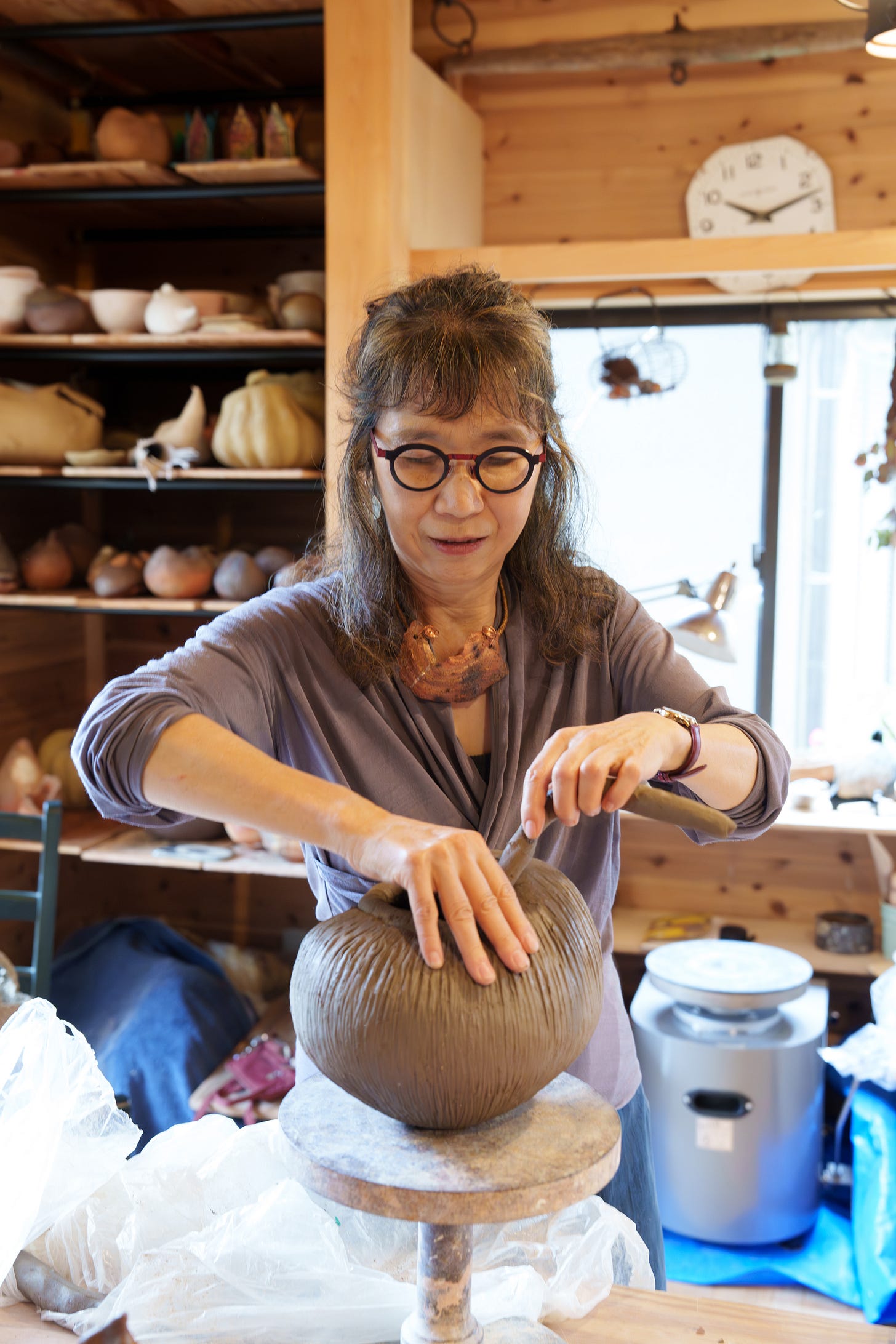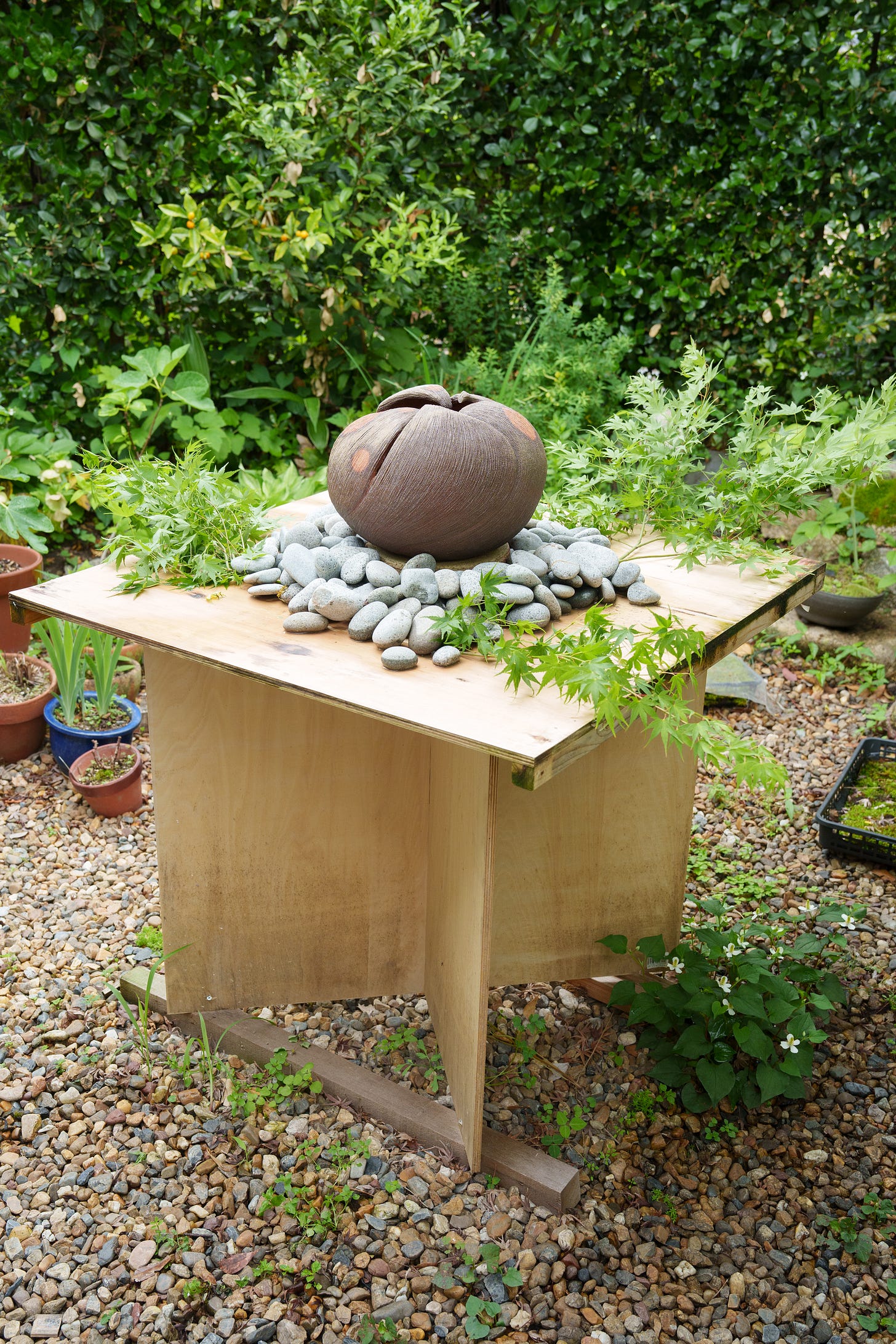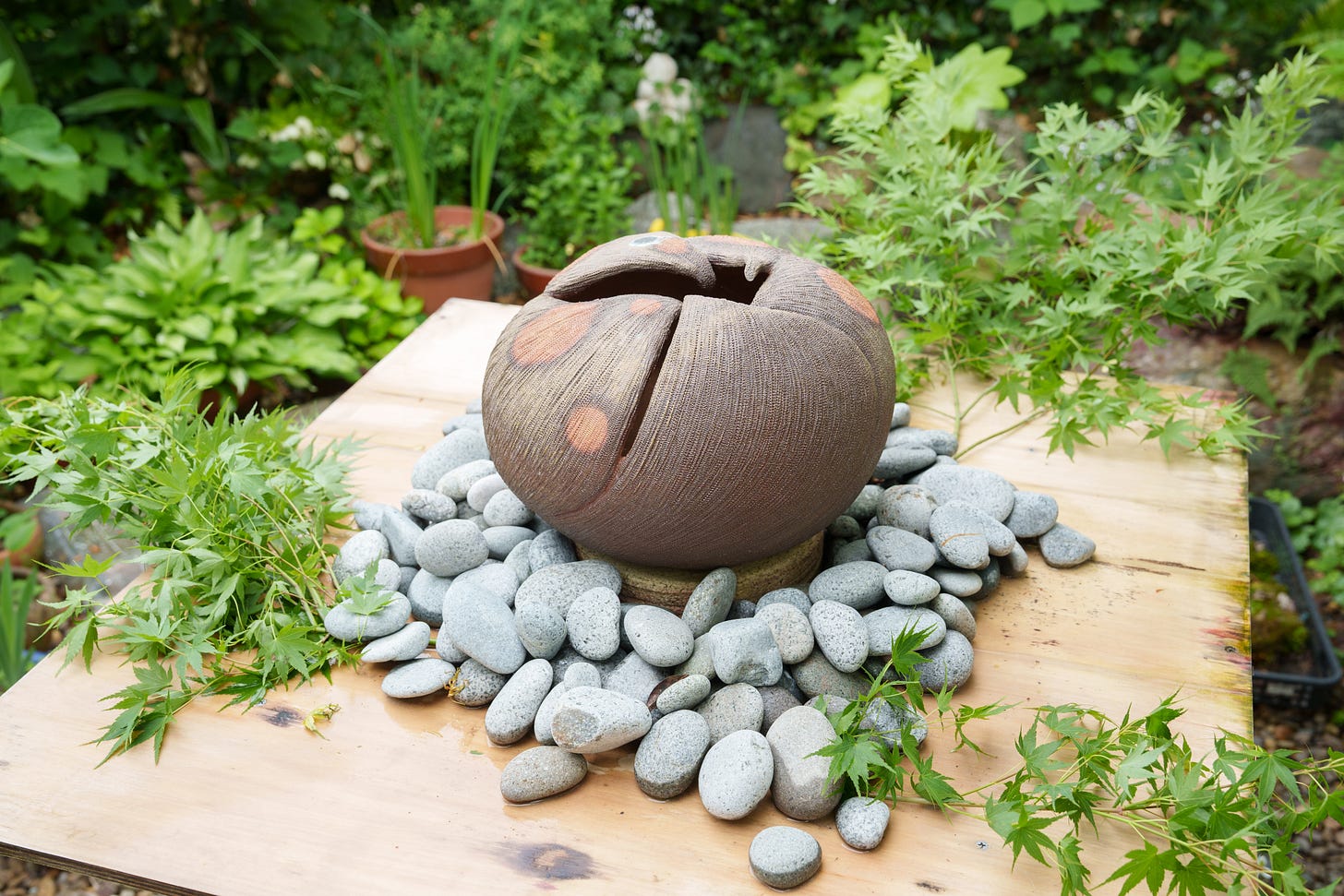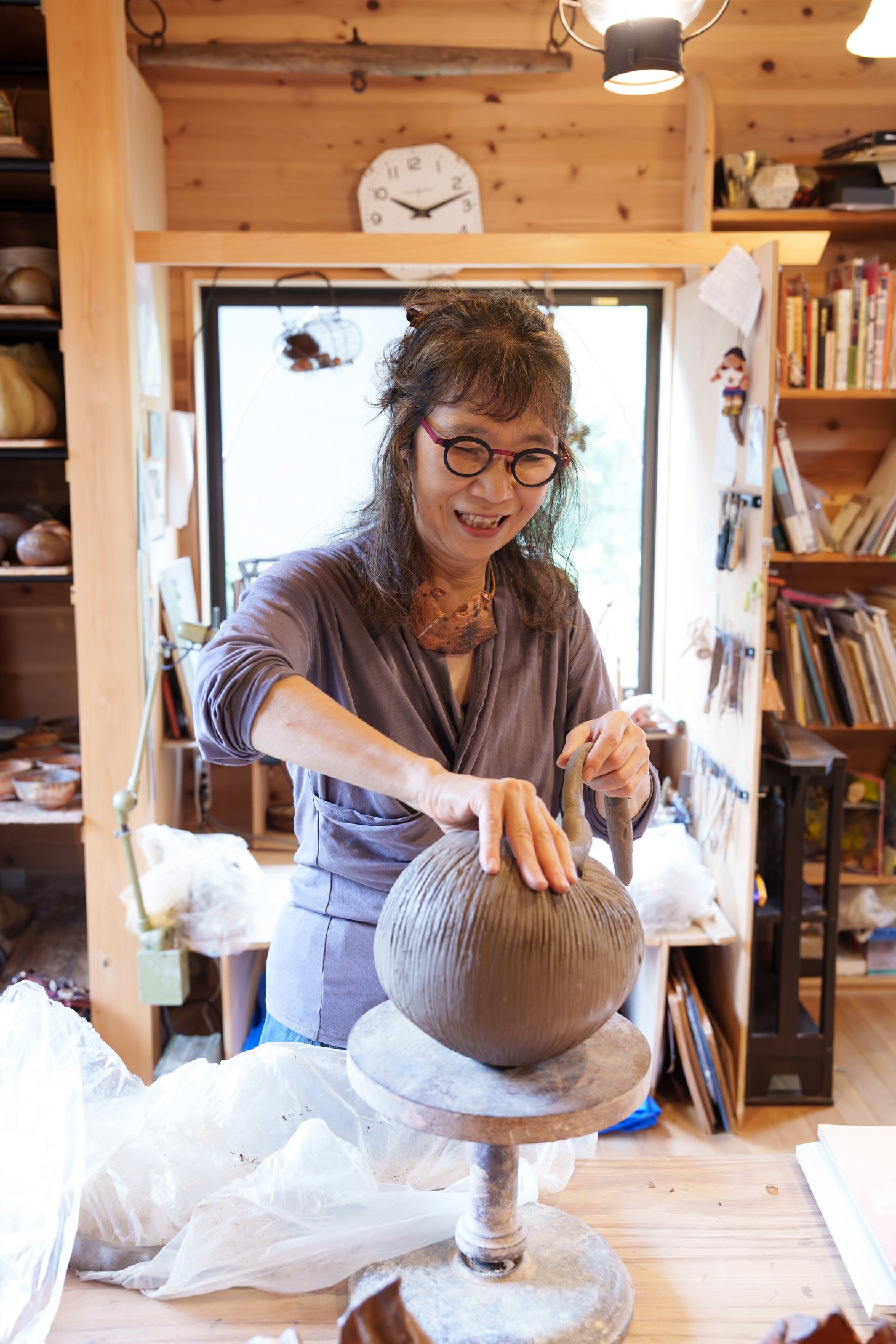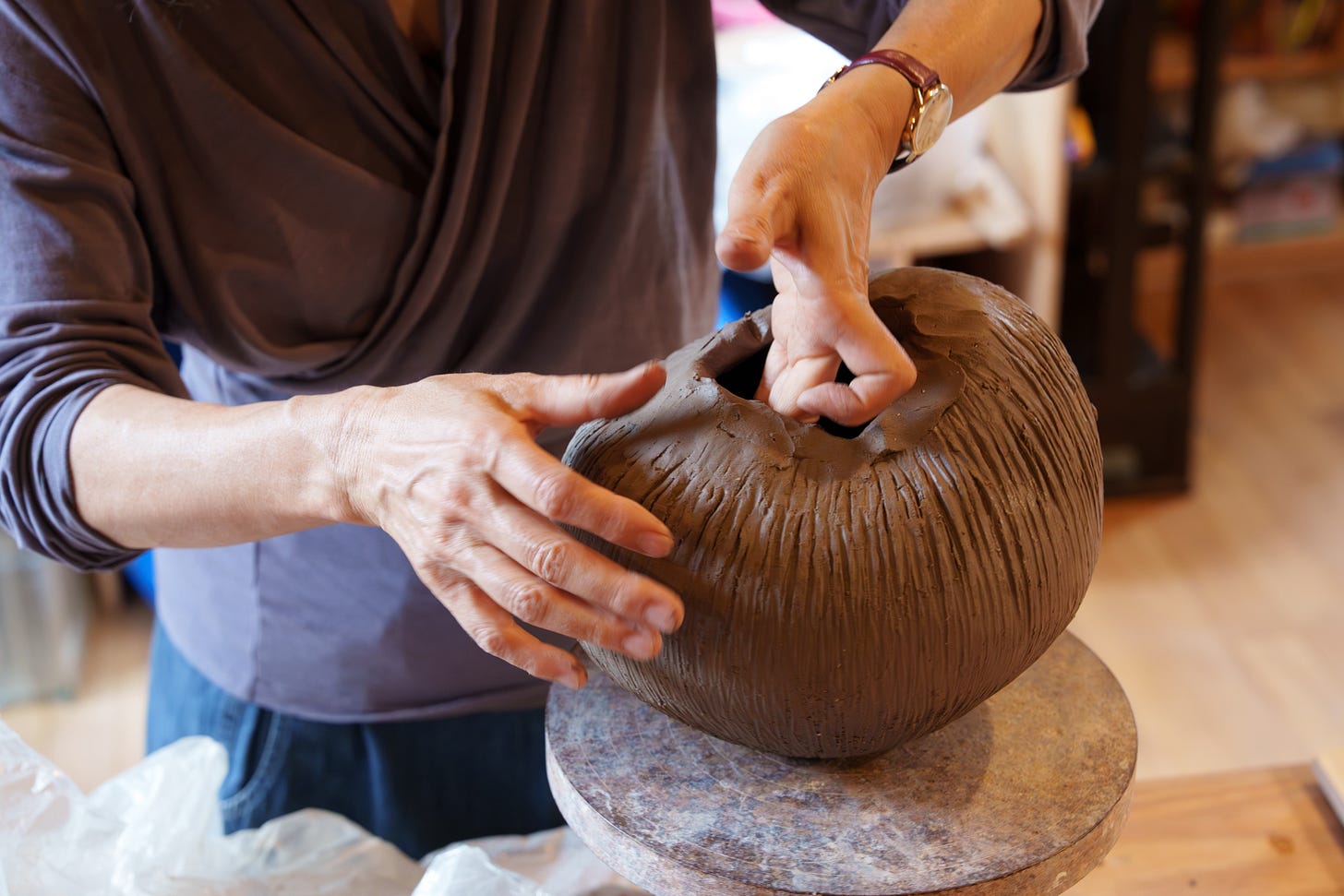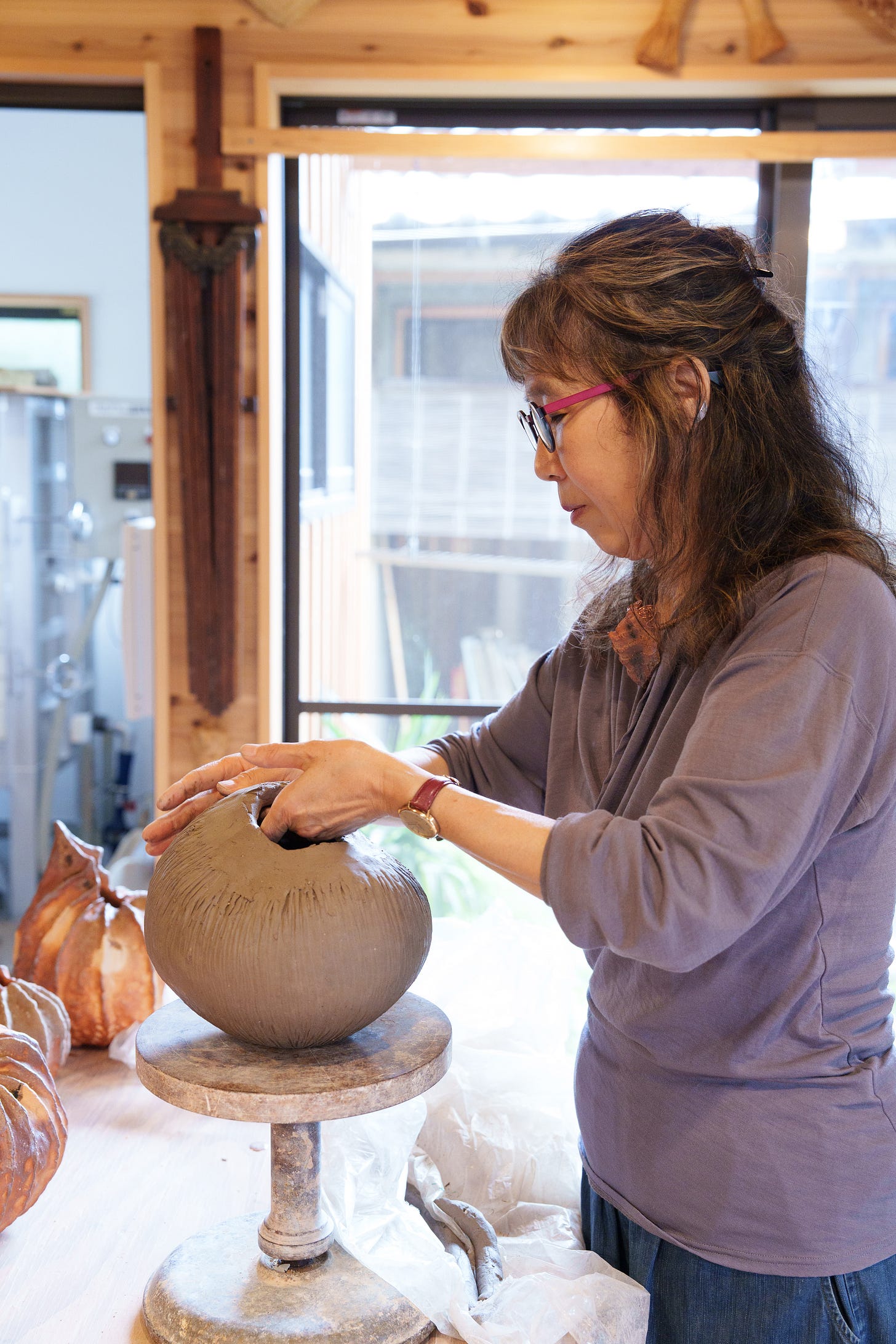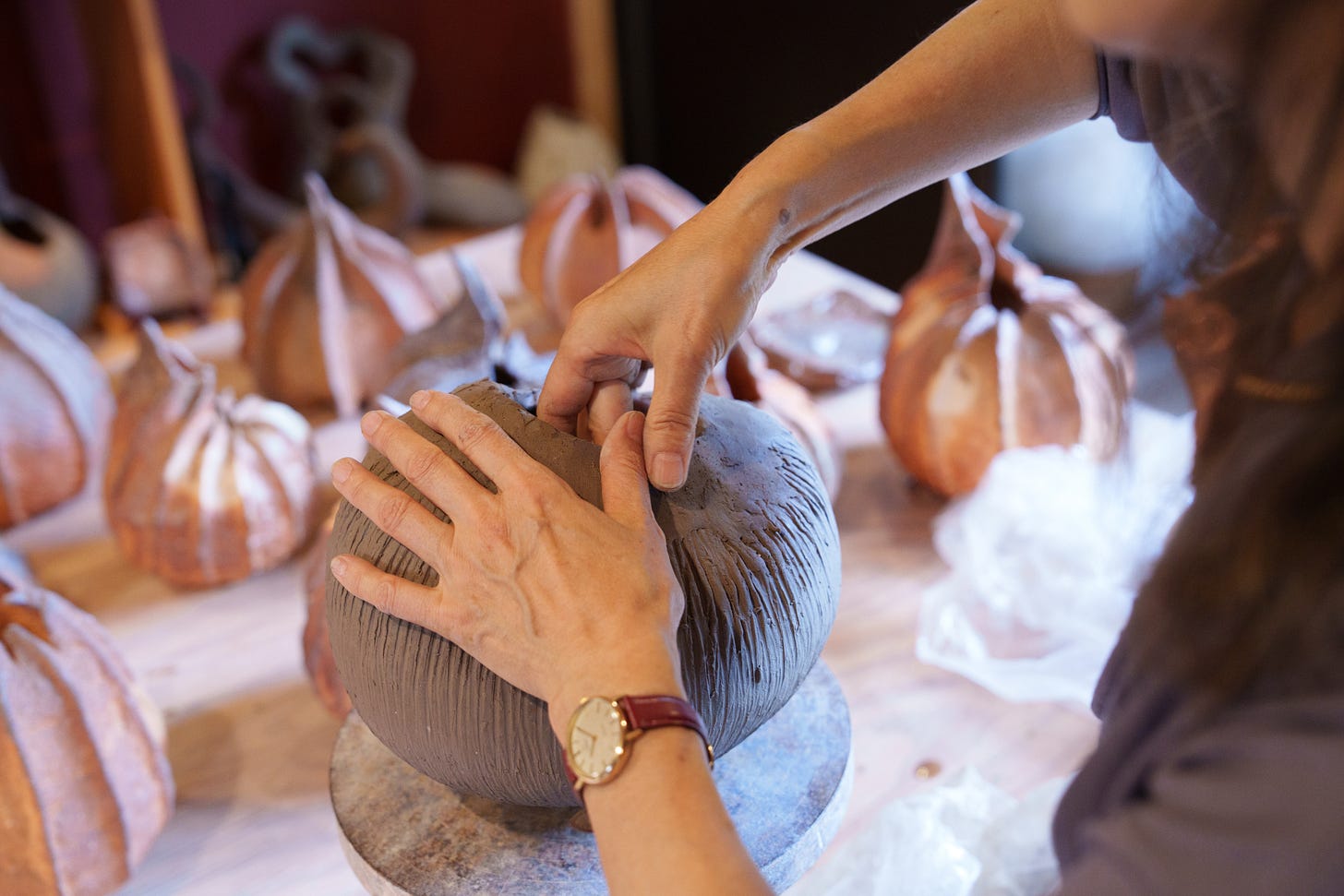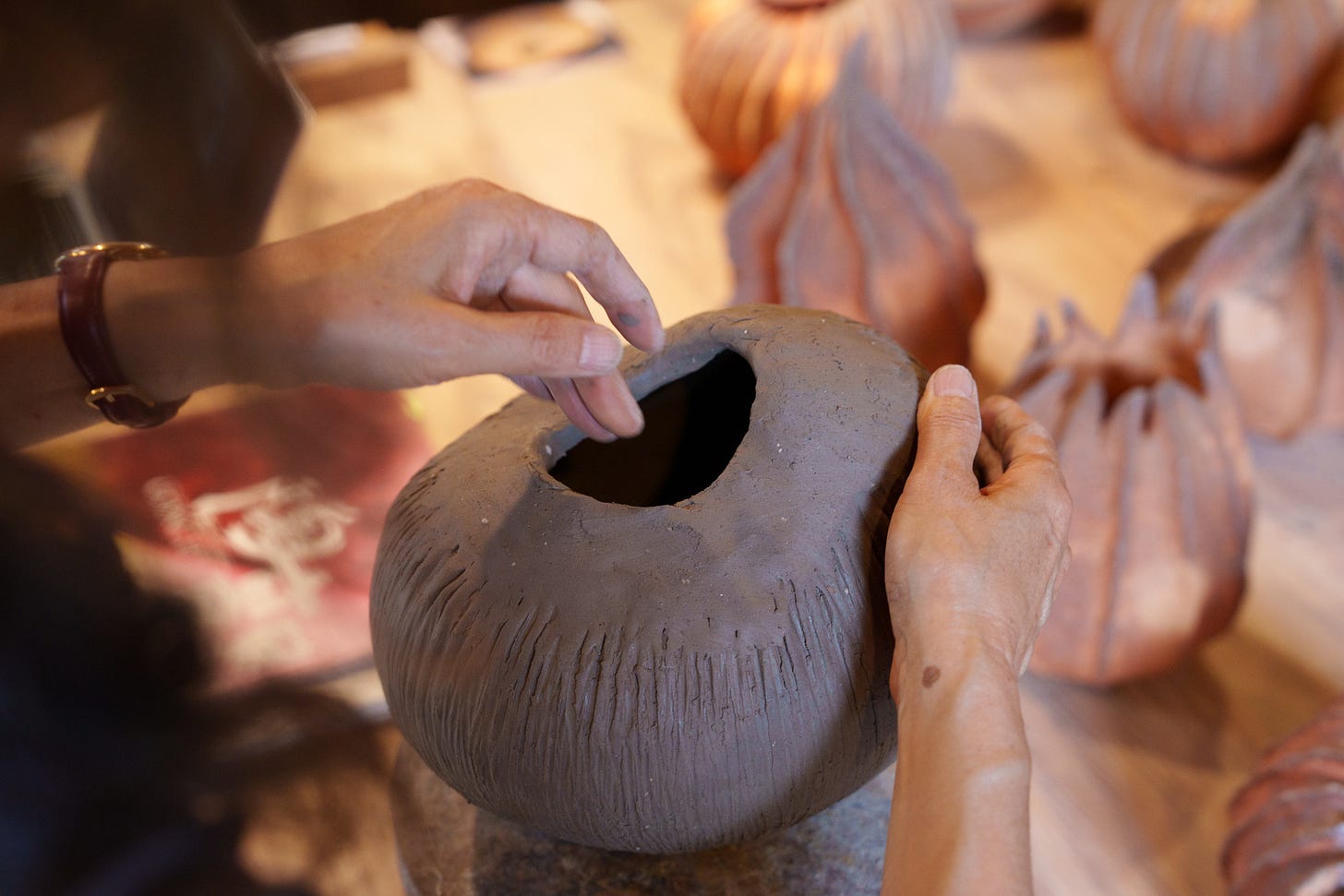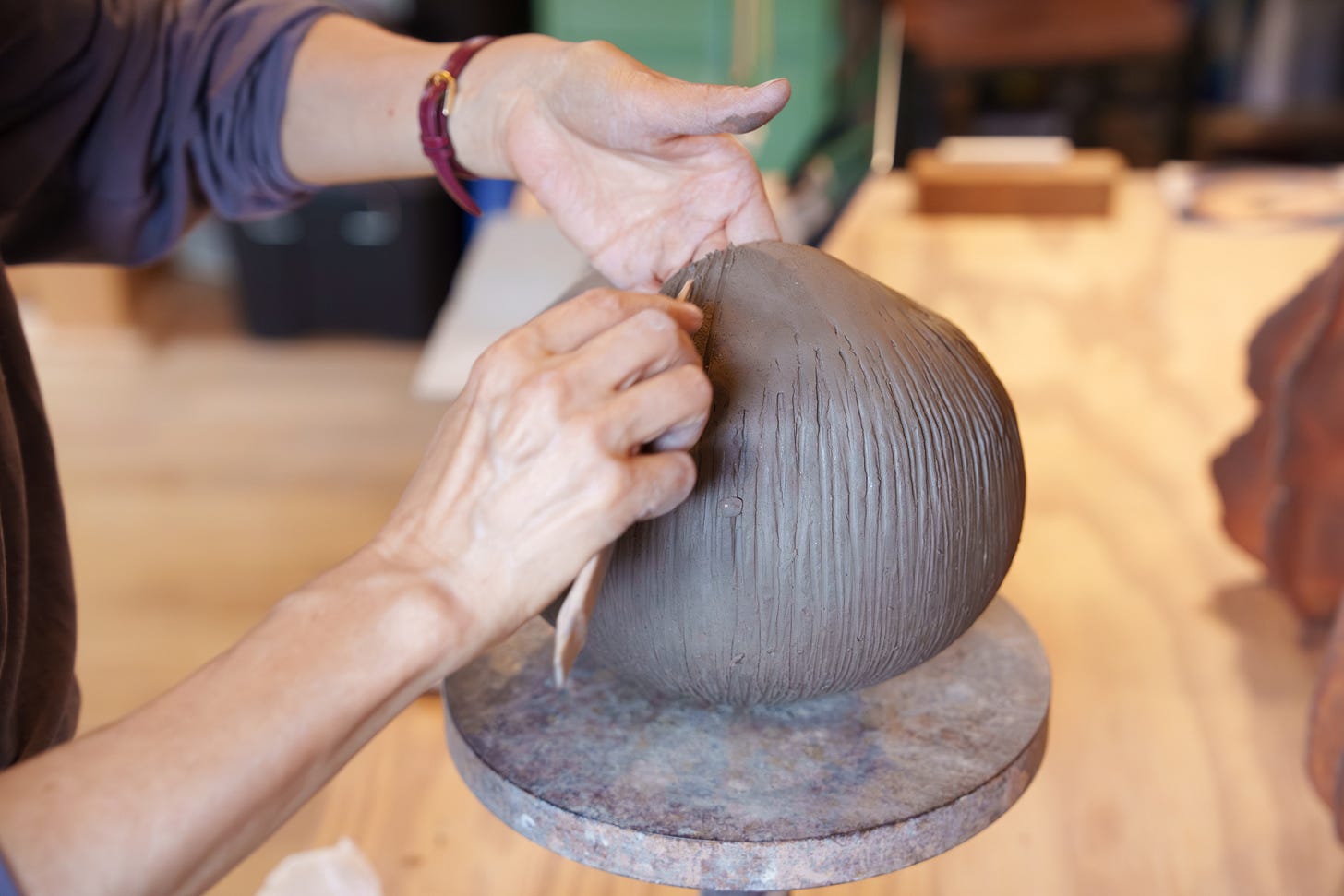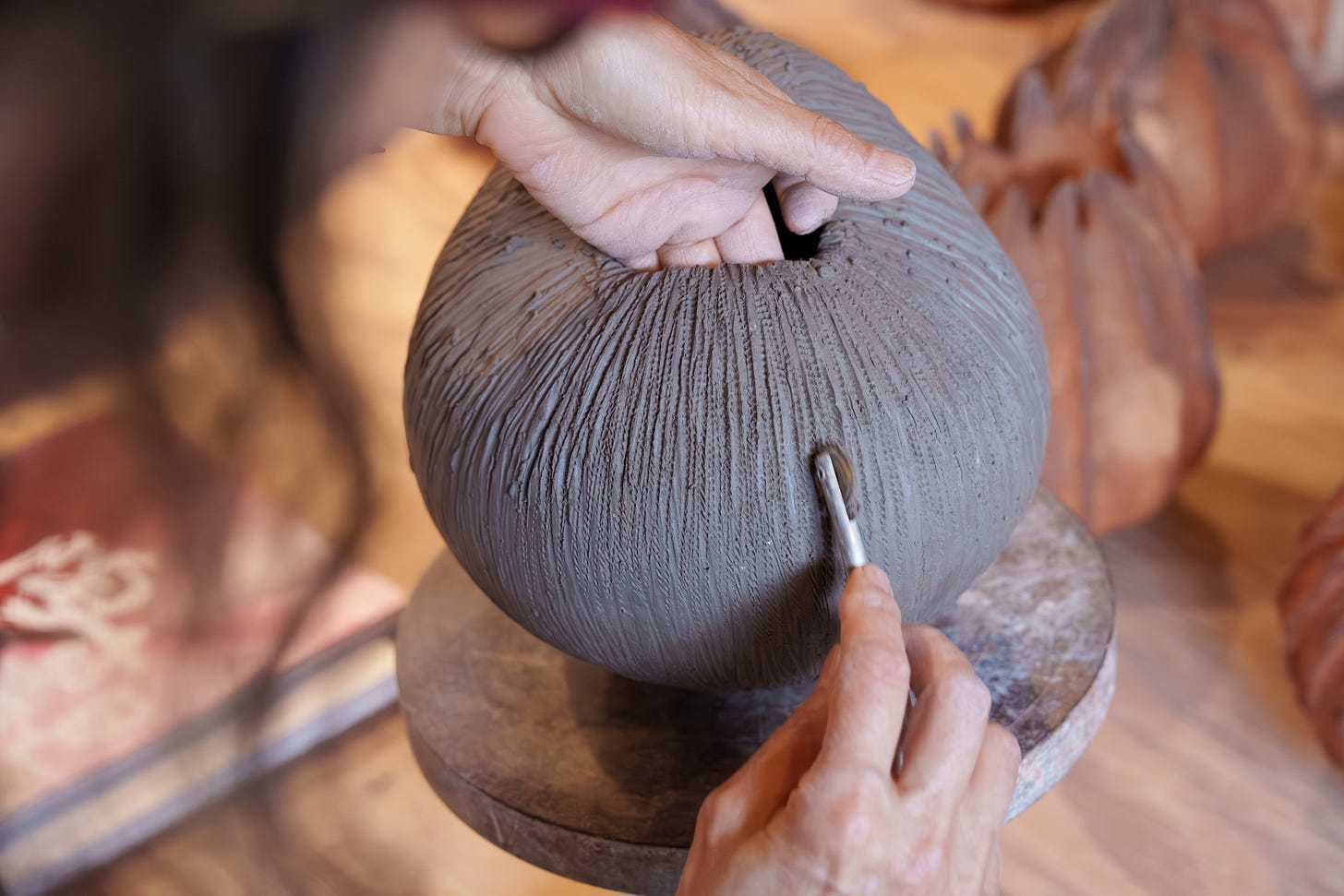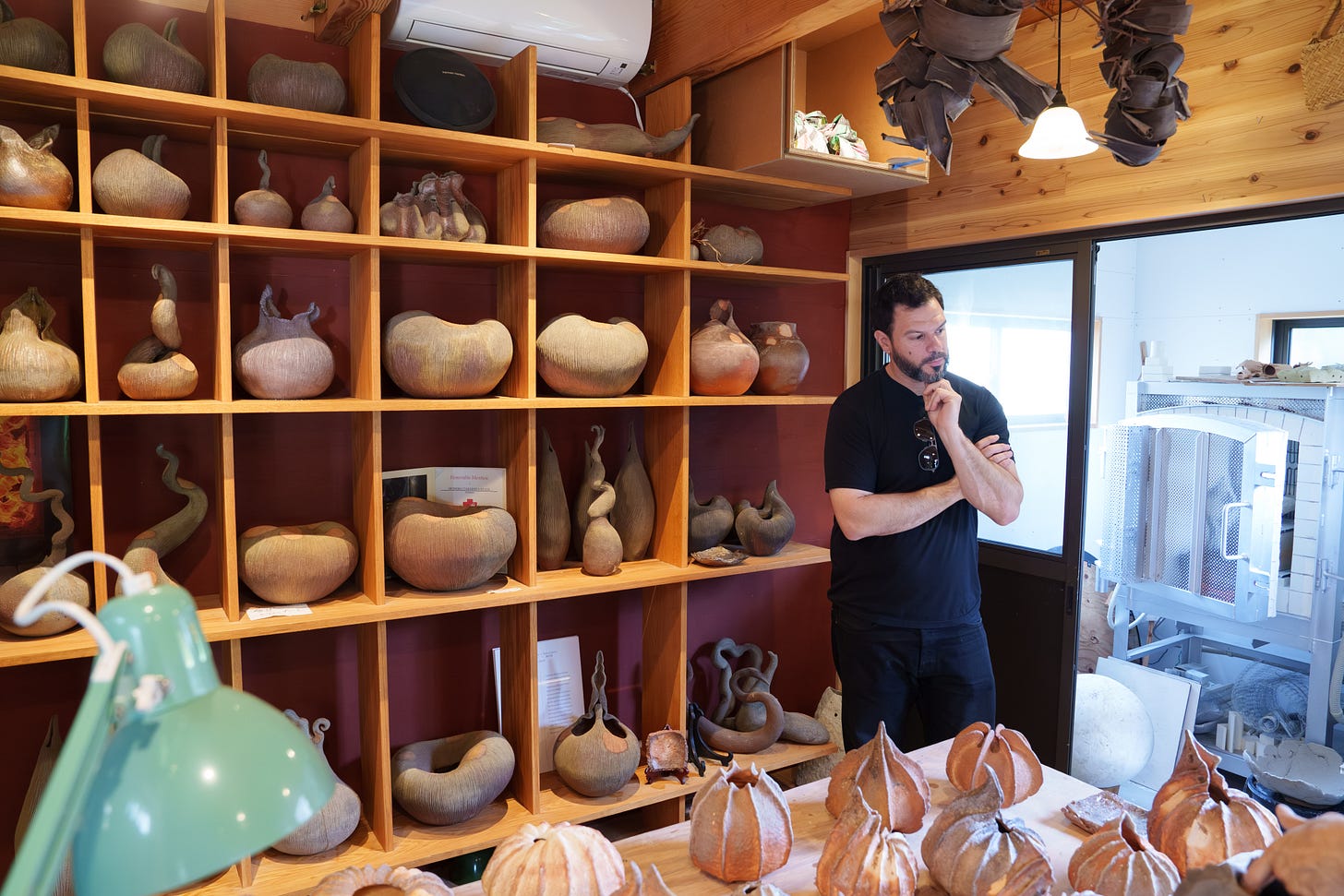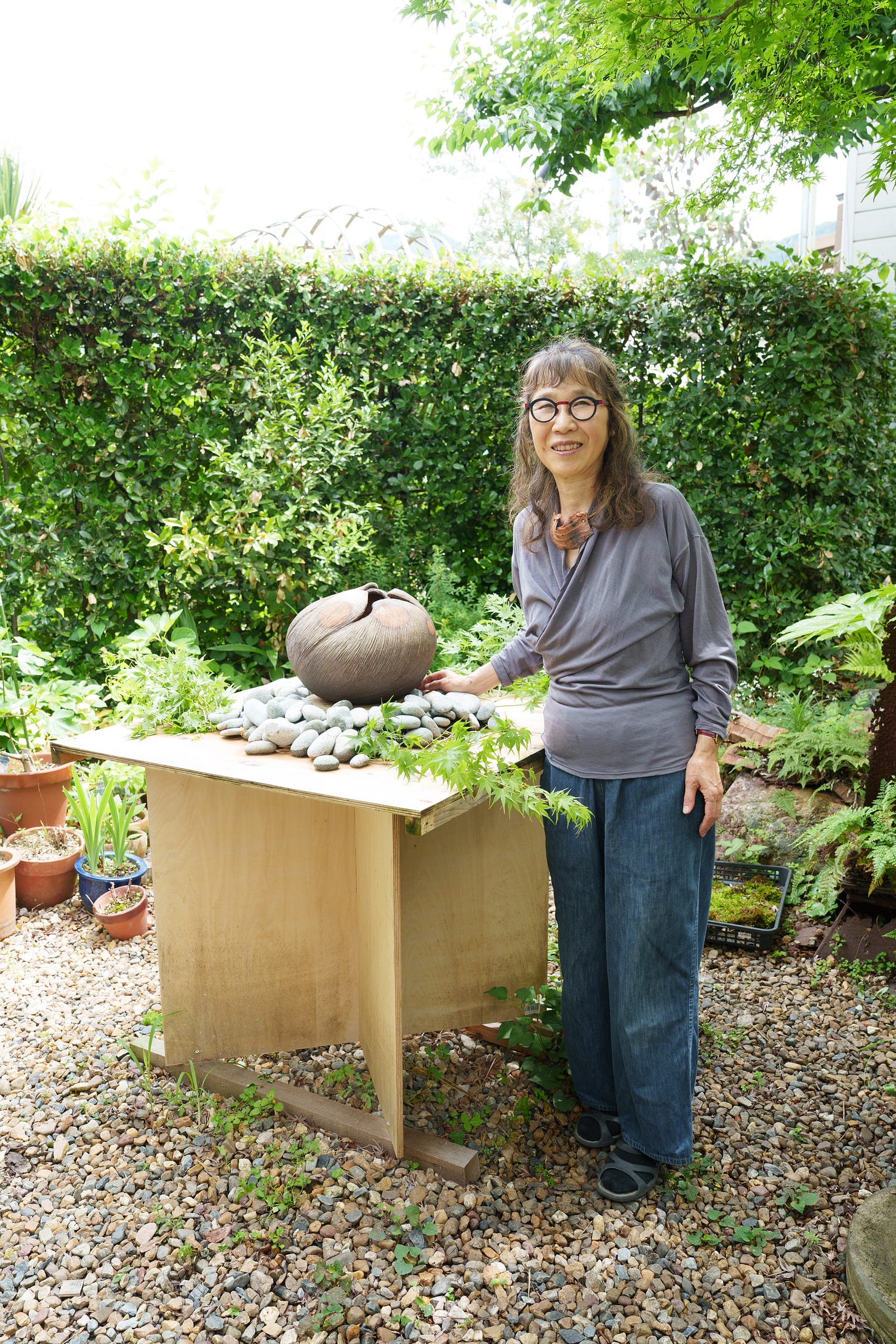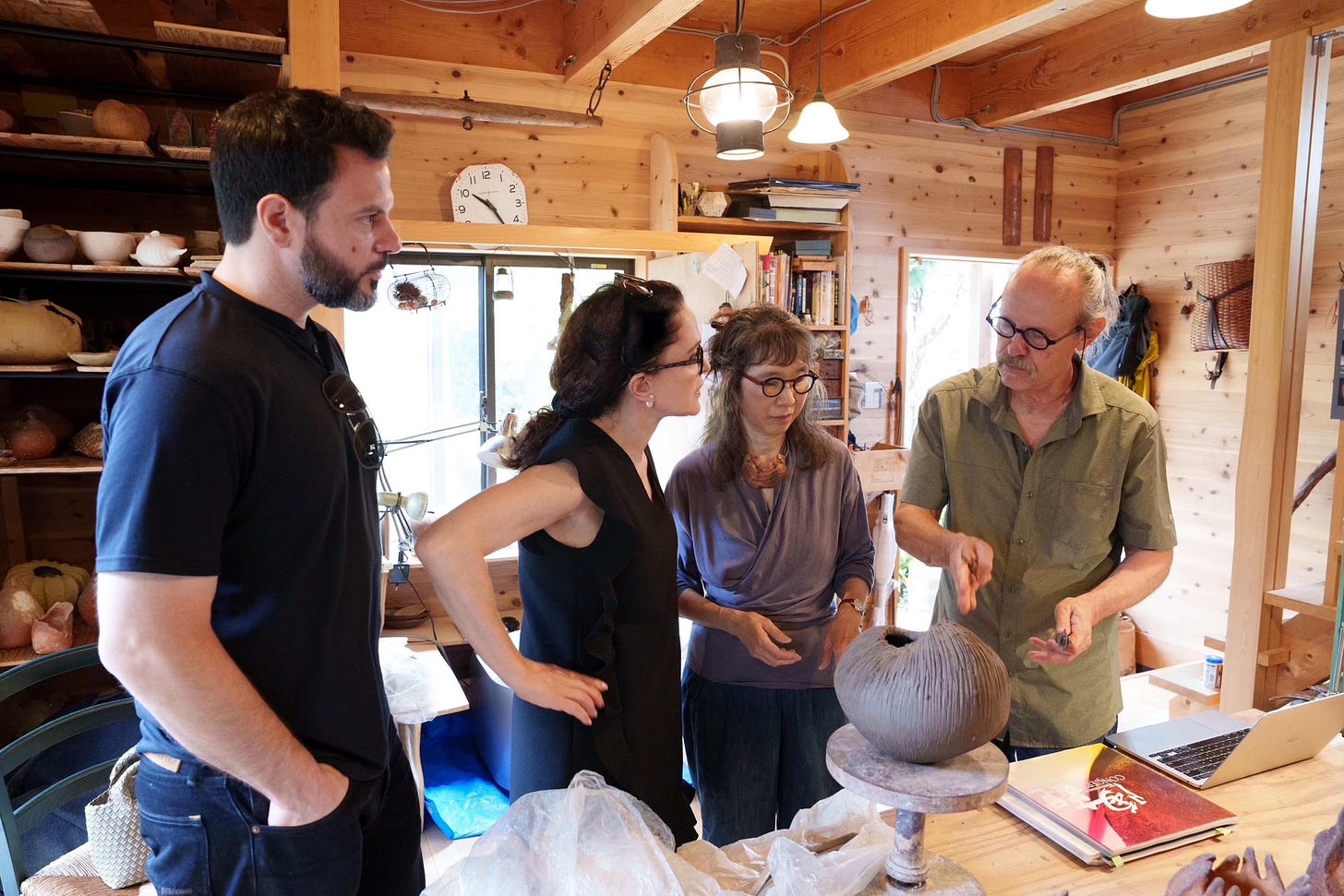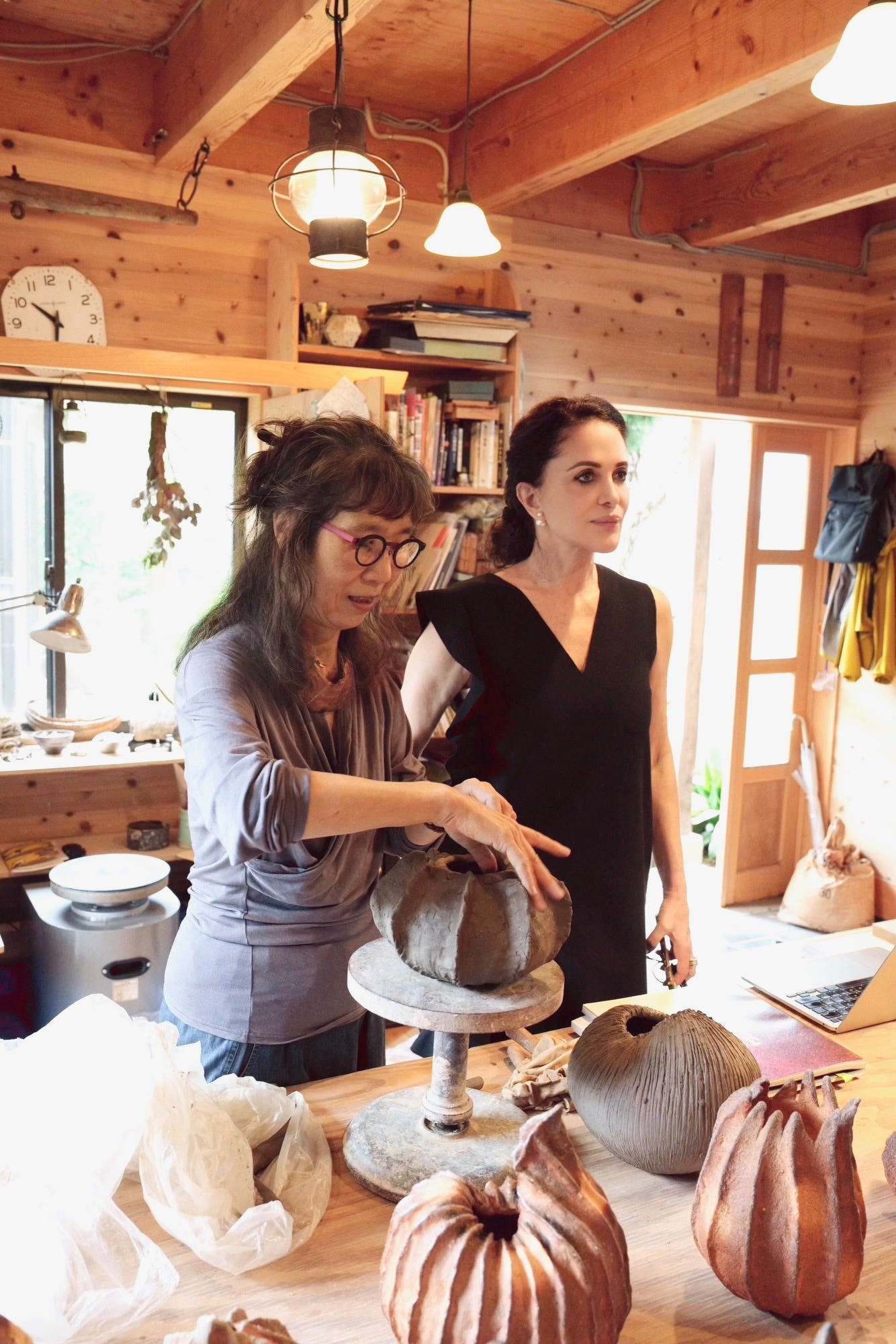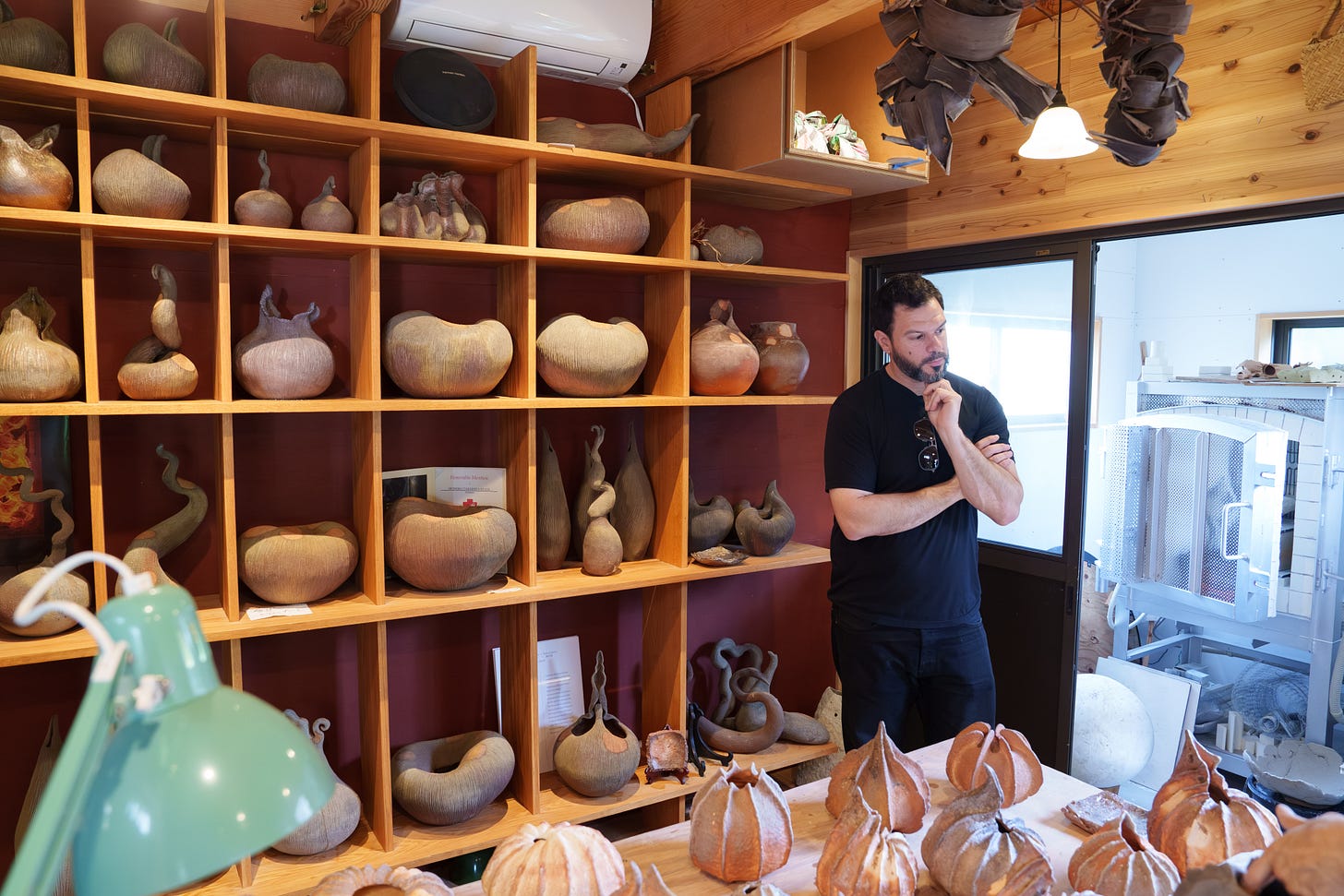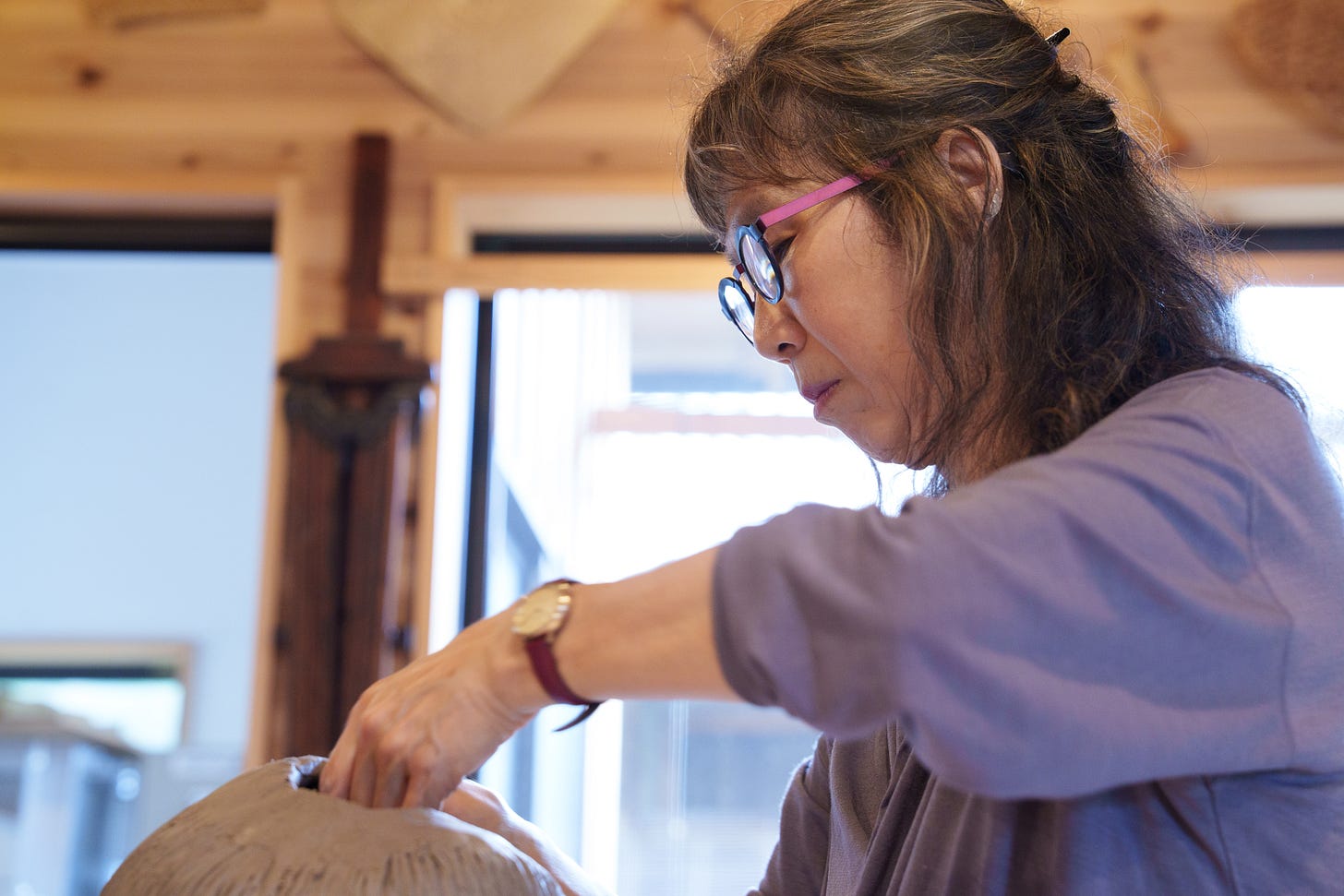Poetic Kogei
Momoko Takeshita-Keane: The Totems
Poetic Kogei
Among the most substantial achievements of contemporary kogei, which not only bring it to the heart of the contemporary art world, but also signify the ability to rethink traditions, is the transformation from the utilitarian to the poetic. By creating objects and sculptures in the mediums of the crafts—clay, glass, lacquer, bamboo, wood—which are fresh, surprising, and replete with narratives, the artists included in this chapter succeed in evoking an emotional reaction and an aesthetic experience on a level unknown in historical kogei. In the same way that poetry evokes stronger emotions than plain text, so too do the new Japanese crafts demonstrate an incredible and lasting impact. Whereas it is metaphors that convey deep meaning (or abstractions that capture experiences, spirituality, and emotions), the mediums of kogei—clay, glass, bamboo, fiber—powerfully transcend pure emotions.
In my exploration of the narrative of contemporary Japanese kogei, the new face of the handmade, I have been traveling throughout Japan on a journey of discovery, traversing small towns, rural villages, rivers, forests, and mountains to reach the studios of Japan’s most talented artists; those who apply traditional craft mediums to create contemporary art and design in their own voice. I have been searching for the individual voice, for those with the rare ability to infuse heritage with innovation, to think outside the box, for those who have devoted their lives—with astonishing energy—to transcending convention in taking kogei to new horizons. This is how I arrived at the studio of Kyoto-based ceramicist Momoko Takeshita-Keane on one early summer day.
When I first saw her series of vessels at the Parisian Galerie Mingei representing her art, I knew that I wanted to meet her and to learn more about her mysterious, somewhat enigmatic body of work. Her sculptures seem to fall between the contemporary and the historical, between the rustic and the refined, the simple and the complex. They are curled up and down in distorted organic forms, like the vibrant autumn leaves in Kyoto’s legendary foliage. Takeshita-Keane, like many of her peers, view the vessel form as her point of departure for her non-functional sculptures, and they look like totems of spiritual significance, like symbols, signs … something that I could not ‘read’ at first.
She grew up in Kyoto, surrounded by all of this heritage of the crafts and was very young when she became interested in clay. But she went to become a teacher before learning ceramics in the ancient region of Shiragaki in the 70s. It is in those years that she leaned the basics of clay. When returning to Kyoto, she studied at the Kyoto City Ceramic Research Institute and opened her own studio in Kyoto. While she experimented with firing techniques in Shiragaki, it was not until she moved to the US in 2002 that she began to create her own ceramics in an anagama kiln at the Fred Herbst studio in Corning Community College. It is at Herbst’s space that she discovered the richness of the wood firing techniques and the effects of burning wood on the clay. The artist a Japanese ceramicist in New York, creating work which is embued with Japanese identity. When living in New York, she told me, she not only used American clay, but was influenced by the sense of freedom, which allowed her to achieve newly-invented forms. ‘The ceramic community in and around Ithaca,’ she says, ‘was incredibly open and willing to share information,’ which she found inspiring and refreshing. Her inspiration is found in sources such as the work of British potter Lucy Rie and Isamu Noguchi, but ultimately, it is the simplicity and utility concepts of the mingei which have shaped her work.
Today, she works at a studio, a two-story wooden structure, adjacent to her home in the outskirts of Kyoto, which she shares with her landscape architect husband Marc Peter Keane, whose magical gardens are found in temples and private homes. The life story of this creative couple has been enhanced by their lives, integrating East and West. Born and raised in New York City, Keane moved to Kyoto in the 80s, after graduating from Cornell, and began practicing landscape design. The two moved to New York when he was invited to teach at Cornell University, and ended up spending nearly two decades in Ithaca. They have recently moved back to their home in Kyoto. With its large windows overlooking the couple’s beautiful garden, the atmosphere is peaceful and harmonious, a magnificent place of inspiration, close to nature and filled with natural light.
I loved watching her as she demonstrated her personal technique and interacted with the clay. She hand-builds her sculptures in the coiling method, creating her distinctive organic forms, which are energetic and look as if they are melting. Each piece is then textured using a tracing wheel sewing tool which leaves the linear textures that look as if textile is wrapped around the vessel. The work is then fired in an anagama kiln which is heated by burning wood. The effects of the firing bring out the essence of her work, she says. Allowing the ash the freedom to fall naturally on the surfaces of the vessels, without interruption, is what causes the accidental marks on her pieces—her signature. They look like enormous lights spots, shining on the textured surface, honoring the concept of the imperfection, and in their own way, mimicking nature. Takeshita-Keane has certainly found her own tools, and her own voice, carrying the Japanese heritage into the 21st century.
Photography by © Takuro Kawamoto.
This visit was made possible by Galerie Mingei.



